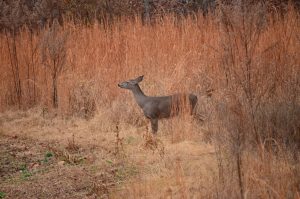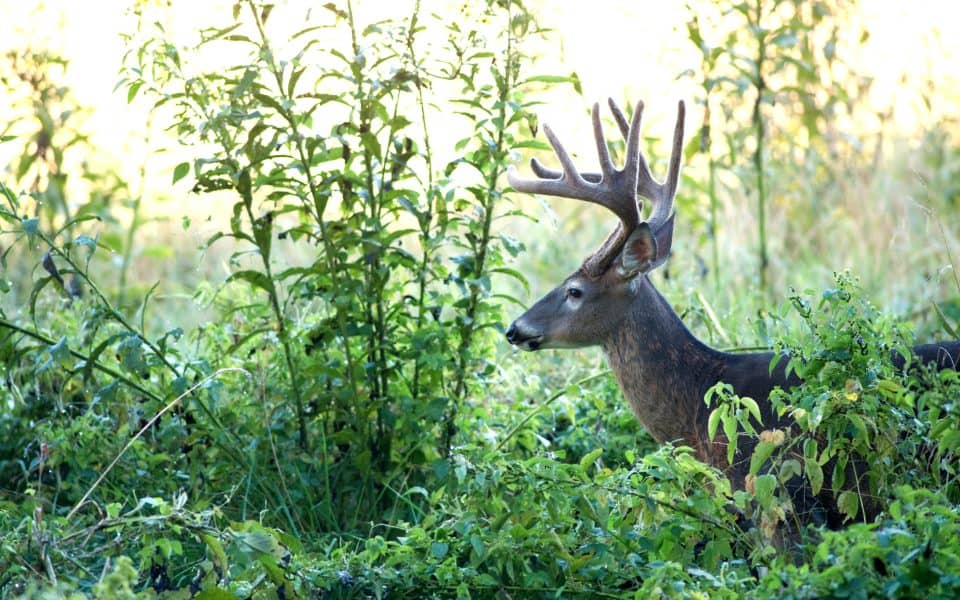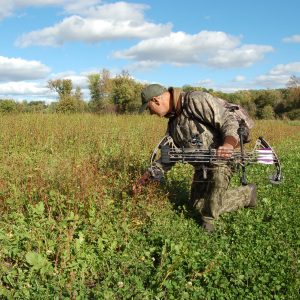A whitetail’s keen senses can be hard to beat in some situations. Setting up food plots to be as conducive as possible for keeping hunters undetected and as welcoming as possible to the deer can take some planning. Observing the mature deer around food sources like ag fields and food plots can certainly teach you some tactics that will benefit you when working on your property.
 Have you ever observed deer coming to a food plot with mature timber on the edge? Oftentimes the youngest deer will come out first with the older does following behind, and the more mature bucks wait until almost last light before coming out of cover. Many times when you have mature, open timber that has plots planted right up to the edge, the older age class deer will just stand back and survey and scent check the area before ever coming out in the open. Mature bucks especially like to do this when they are scent and visually checking plots for does, they can see the entire plot from the woods without ever really exposing themselves.
Have you ever observed deer coming to a food plot with mature timber on the edge? Oftentimes the youngest deer will come out first with the older does following behind, and the more mature bucks wait until almost last light before coming out of cover. Many times when you have mature, open timber that has plots planted right up to the edge, the older age class deer will just stand back and survey and scent check the area before ever coming out in the open. Mature bucks especially like to do this when they are scent and visually checking plots for does, they can see the entire plot from the woods without ever really exposing themselves.
One of my favorite ways to provide some diversity and make a plot more productive and “hunter friendly” is to build a soft, thick edge that creates a transition zone between the woods and the food source. This strip can be just one or two tractor widths wide and really make a big difference. On established plots it can be as simple as letting the edge of plots grow up and turn into narrow strips of native weeds and grasses.
If your edges are already full of weeds, brush, and grasses, selective herbicides can be used to kill many of the low quality saplings and brush allowing a denser stand of native grasses and forbs. New plots being cut out of tall, native habitat or old fallow fields work great. The edges 10 to 20 yards deep can be left to create a softer edge or transition zone between the woods and food plots.
These ecotones of early successional plants can also be created with other methods such as hinge-cutting and burning to “reset” or set-back the undesirable woody plants and saplings to grow more beneficial native habitat. More edge effect simply helps with more wildlife.

Another tactic is to use annual warm season plantings that contain many seed-producing plants that double as great edge effect, as well as providing food value for critters as small as song birds and insects, to turkey and whitetails. I often use Whistle Back or Blind Spot to grow this soft edge in areas with open ground between the woods and a food source. Try adding more soft edges around food plots or ag fields and see the difference in your hunts and whitetail behavior.






